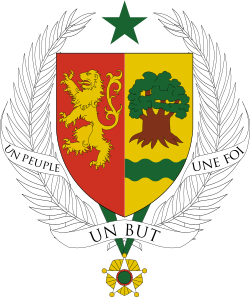This article relies largely or entirely on a single source .(December 2025) |
 |
|---|
Labour Party of Sine Saloum (in French: Parti travailliste du Sine Saloum) was a political party in Sine-Saloum, Senegal. It existed around 1960.
This article relies largely or entirely on a single source .(December 2025) |
 |
|---|
Labour Party of Sine Saloum (in French: Parti travailliste du Sine Saloum) was a political party in Sine-Saloum, Senegal. It existed around 1960.